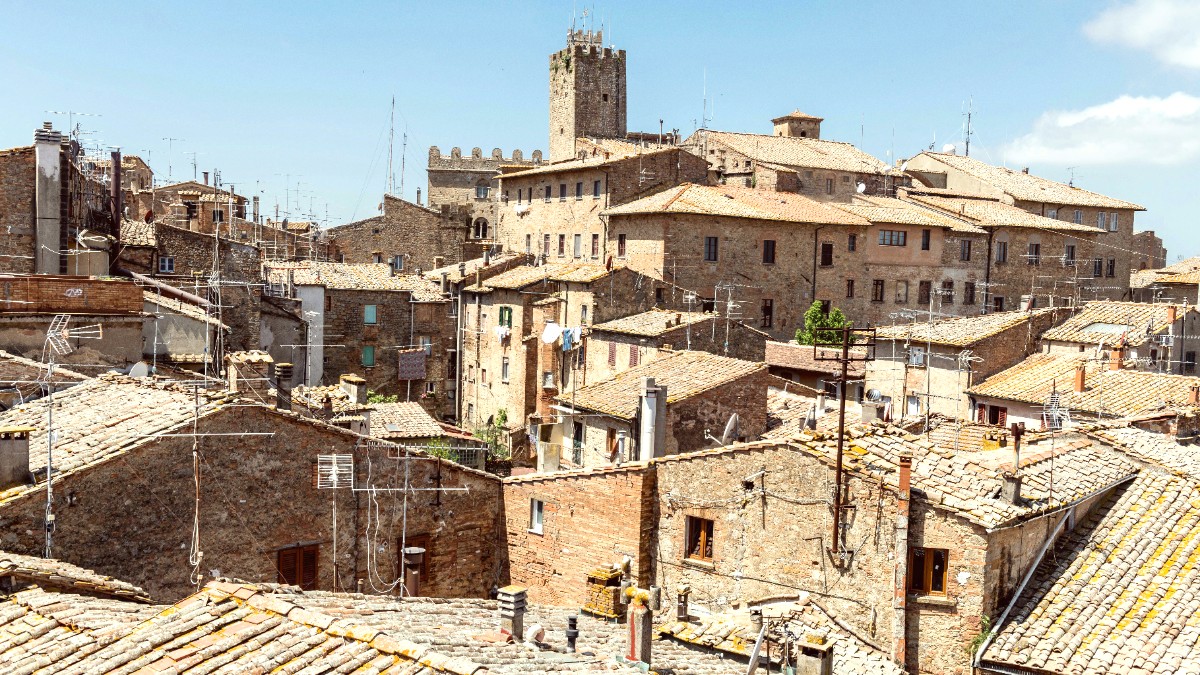
Tuscany, Italy
For international travelers, flying into a major Tuscan airport forms the main way to reach the region. Pisa International Airport (PSA) – Galileo Galilei Airport is approximately 60 kilometers (37 miles) northwest of Volterra. This airport often serves as the most convenient gateway due to its closer proximity and generally better public transport connections to the nearest train lines. Florence Peretola Airport (FLR) – Amerigo Vespucci Airport sits approximately 80 kilometers (50 miles) northeast of Volterra. Florence's airport also serves as a major hub for Tuscany, presenting connections to many European cities. Rome Fiumicino Airport (FCO) – Leonardo da Vinci International Airport lies about 280 kilometers (174 miles) south of Volterra. While a major international hub for long-haul flights from outside Europe, it involves a longer onward journey to Volterra.
All major Italian airports come with standard facilities and services. You will find car rental desks, currency exchange services, ATMs, duty-free shops, restaurants, and airline lounges. These facilities aid a comfortable travel experience upon arrival and departure. Direct flights to Pisa and Florence primarily come from European cities. Travelers from North America, Asia, or other continents typically need a connecting flight through a major European hub, like London, Paris, Frankfurt, Amsterdam, or Rome. Compare prices with services like Dollar Flight Club and Skyscanner.
Volterra does not host a train station. Closest are Pontedera-Casciana Terme (Pisa-Florence line) and Cecina (Pisa-Rome coastal line). From these, onward travel to Volterra happens by bus.
Autolinee Toscane operates main public bus services in Tuscany. It offers regional connections to Volterra from towns like Pontedera, Cecina, Colle di Val d'Elsa, San Gimignano, and Siena.
A valid domestic driver's license (EU/EEA) or an IDP with domestic license (non-EU/EEA) is necessary. The minimum rental age is 21-25. Car rental from DiscoverCars.com is an option.
Volterra is an inland town and not directly accessible by sea. The closest major seaport is Livorno, approximately 60 kilometers (37 miles) west. Livorno serves as a ferry port for Sardinia, Corsica, and other Mediterranean destinations. Onward travel from Livorno to Volterra happens by train/bus or rental car.
Italy imposes no specific exit fees or taxes upon departure for tourists. Airport departure taxes generally come included in the airfare price.
For international flights, arrive at the airport 2-3 hours before departure. For domestic or Schengen area flights, arrive 1.5-2 hours early. For train stations, arrive 15-30 minutes before departure. Validate paper regional train tickets using green machines on platforms before boarding.
Major airports and train stations offer standard facilities for departing travelers, including restrooms, various food and beverage options, shops (duty-free at airports), and comfortable waiting areas. Always allow ample time for check-in and security.
Transfer from Florence Airport involves bus, train, and another bus. Volainbus shuttle brings you to Florence Santa Maria Novella (SMN) train station. From SMN, a train goes to Pontedera-Casciana Terme. A local bus then transports you from Pontedera to Volterra.
You need a valid driver's license (from an EU/EEA country) or a valid domestic license combined with an IDP (for non-EU/EEA drivers, obtained in your home country before travel). A credit card in the main driver's name is necessary for the deposit. The minimum age for car rental in Italy is typically 21 to 25, with potential surcharges for younger drivers.
Many historic city centers, including Volterra, feature restricted traffic zones (ZTL). These prohibit or restrict non-resident vehicles. Penalties for unauthorized entry are high and enforced by cameras. Do not drive into Volterra's historic center. Park your car outside the city walls in designated paid parking lots. Parking areas include Parcheggio della Porta Fiorentina, Parcheggio di Vallebona, and Parcheggio Docciola. Expect to pay hourly or daily rates.
Arrive at the airport 2-3 hours before international flights to allow ample time for check-in, baggage drop-off, and security screening. For domestic or Schengen area flights, arrive 1.5-2 hours before departure. All major airports offer standard facilities for departing travelers, including restrooms, various food and beverage options, shops (including duty-free at airports), and comfortable waiting areas.
Arrive at least 15-30 minutes before your train's scheduled departure. If you have a paper ticket for a regional train, validate it using the green machines located on platforms or in station halls before boarding to avoid fines. High-speed train tickets typically do not need validation. Train stations offer facilities like restrooms, food kiosks, and waiting areas.
Arrive 10-15 minutes before departure. Be aware that schedules for regional buses, especially on weekends, can be limited.
Plan enough time to return your rental car. Factor in traffic and location of the return desk at the airport or station.
Italy does not levy specific exit fees or taxes upon departure for tourists. Airport departure taxes are generally included in the airfare price.
Double-check all travel documents before heading to your departure point. Confirm transportation arrangements to the airport/station.